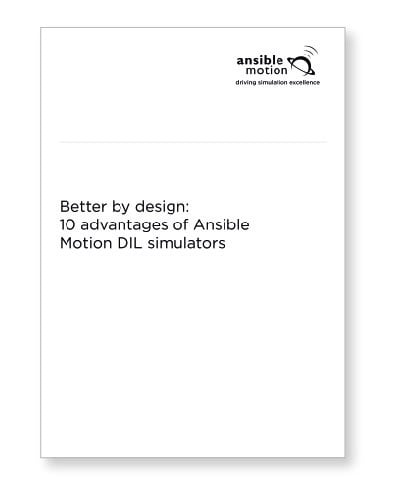 According to foreign media reports, Hyundai Motor Group is strengthening its research and development capabilities by introducing a virtual reality (VR) -based driving simulator. Hyundai Motor plans to use VR technology to reduce the cost and time of actual driving tests, thereby improving the competitiveness of future models.
According to foreign media reports, Hyundai Motor Group is strengthening its research and development capabilities by introducing a virtual reality (VR) -based driving simulator. Hyundai Motor plans to use VR technology to reduce the cost and time of actual driving tests, thereby improving the competitiveness of future models.
Hyundai Motor Group is promoting the introduction of Ansible Motion's VR driving simulator in the new car development stage. The model that Hyundai Motor Group is considering adopting is the company's representative product Delta series, and the equipment will be adopted as early as this year.
Ansible Motion's driving simulator is a cutting-edge device that can accurately reproduce the real driving environment in virtual space through mathematical modeling. It can apply vehicle specifications and settings, just like driving on real roads, support the creation of diverse driving scenarios, and test the vehicle's acceleration performance, steering response, braking effectiveness, etc. It is worth noting that it can also set sudden variables such as collision accidents as test scenarios to predict damage result values.

If Hyundai Motor Group introduces this equipment, it will significantly reduce the time and cost of vehicle road testing. With the VR simulator, Hyundai Motor Group can conduct accurate virtual experiments from the initial design stage of vehicle development. This means that trial and error can be minimized, and the cost and time of prototype production and driving evaluation can be reduced.
Hyundai Motor Group's new car development process is expected to be accelerated as a result. Hyundai Motor Company plans to launch 21 electric models by 2030, and Kia Corp. is also required to launch an electric product matrix of 15 models (including special-purpose vehicles PBV) by 2027. All upcoming vehicles must pass high-speed driving capability and braking performance tests, and the introduction of VR simulators can shorten this process. In addition, it can also conduct more precise driving tests while reducing manpower, equipment costs and actual driving time. Industry insiders explained:
As performance tests approach their limits, costs such as professionals and tires also increase. The use of VR simulators can not only reduce costs, but also achieve environmental benefits by reducing fuel and tire consumption.
Read more on the EE World website.



